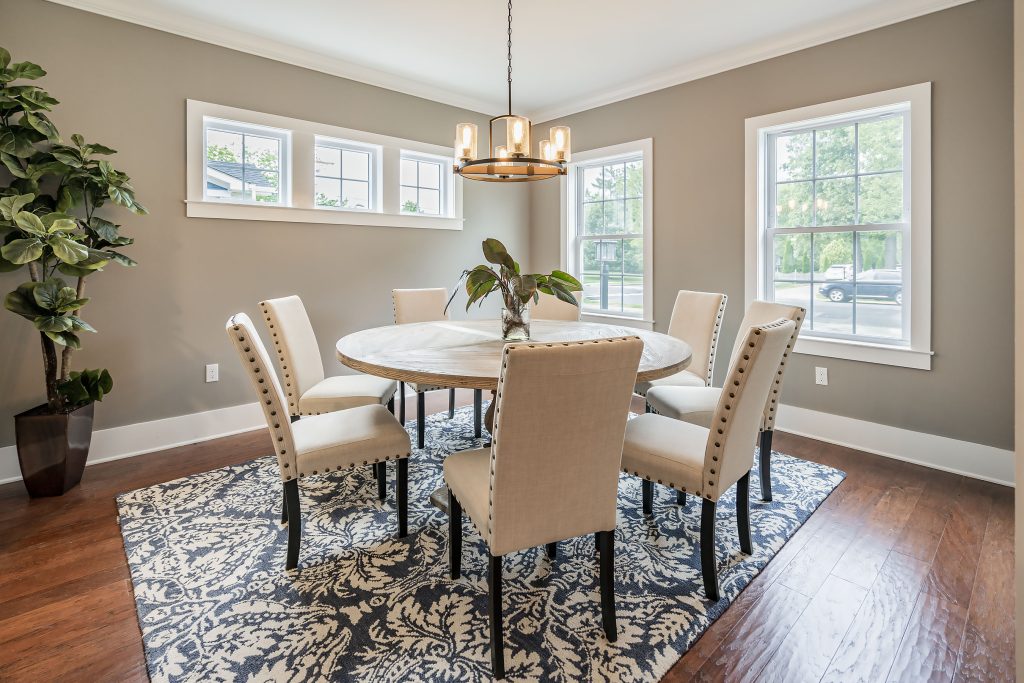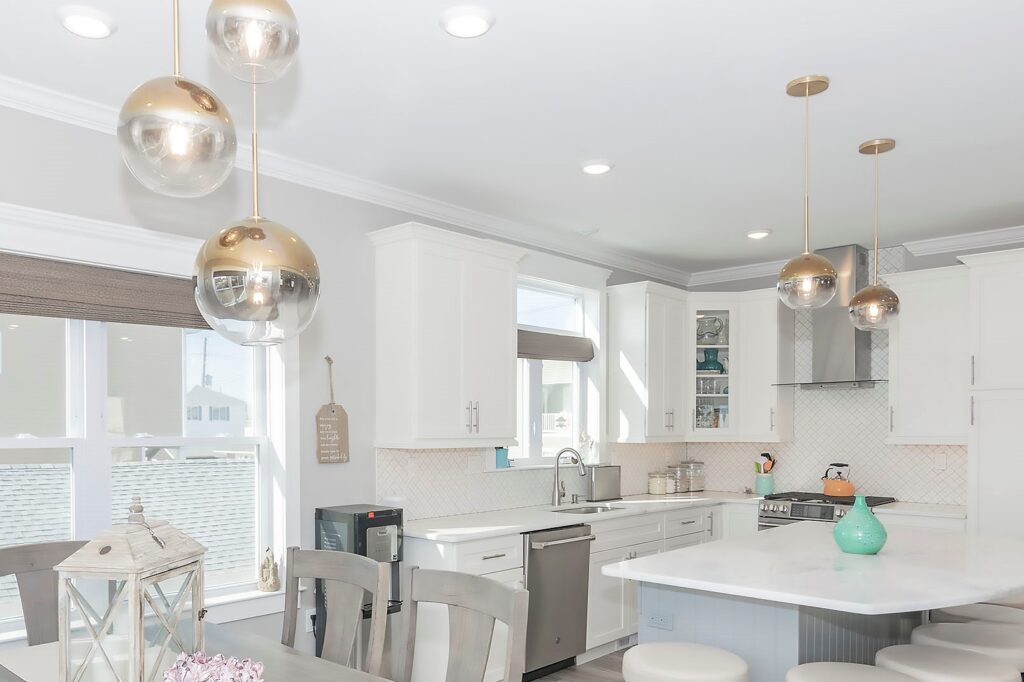
Lighting can add drama, highlight artwork, illuminate workspaces, and more. In some rooms, recessed lighting is appropriate, but in others, like a bedroom, overhead lighting can be sterile and make it difficult to wind down for sleeping. Kitchens require ambient lighting but also task lighting for safety. And, lighting can change the color of wall coverings, so that’s another element to consider.
The 3 Functions of Fixtures
There are three types of interior lighting: general (ambient), task, and accent. Ideally, your home will integrate all three types.
- General lighting (or ambient lighting) is the primary source of light in a room. It illuminates the entire space while setting the overall mood and creating ambiance. Think of flush-mount ceiling fixtures, recessed lighting, and chandeliers.
- Task lighting is a specific and more concentrated form of light. Think of the lights under your cabinets that brighten your food prep area or the lighting around your bathroom mirror that enable you to get ready with confidence. Task lighting—like a reading lamp or pendant light—can help reduce eye strain and improve productivity.
- Accent lighting is the dramatic sibling of the other two types. This type of lighting makes a statement in a room, or sheds light on the accent wall, piece of artwork, or fireplace that anchors a room. Accent lighting, like sconces and track lights, can highlight the architectural features of your home and draw your eye to whatever it’s illuminating.
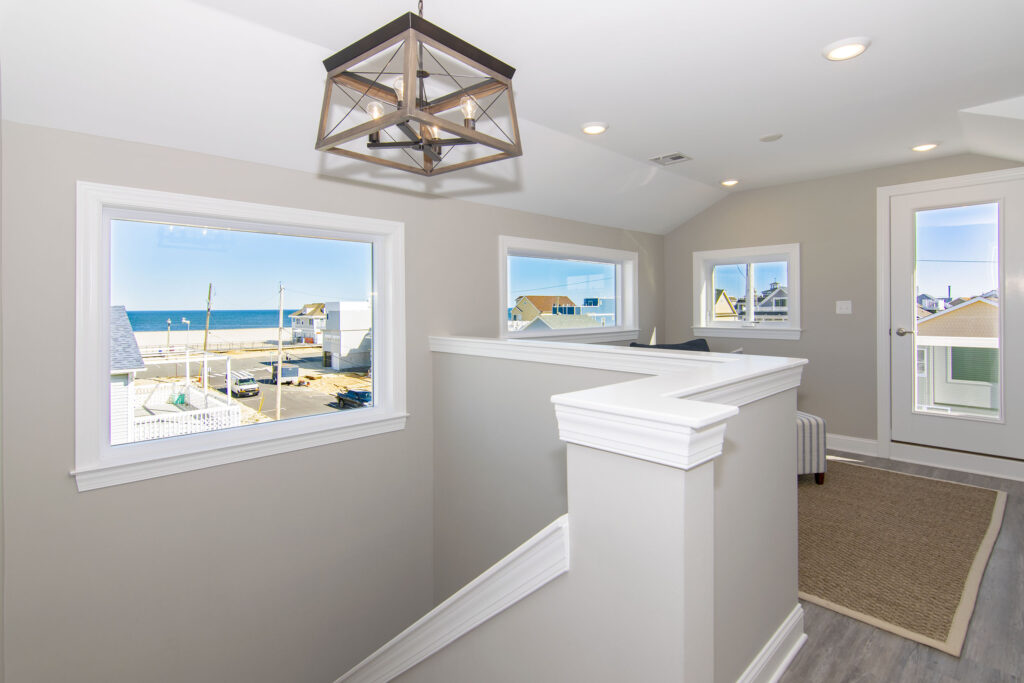
Types of Light Fixtures
From built-in, integrated fixtures crafted by tradesmen to one-bulb table lamps that simply plug in where needed, there’s a type of interior lighting for your every need. Here are some of the most popular.
- Architectural lighting: There are three main types of architectural lighting–cove, soffit, and valance—and all are built into the room’s bones.
- Cove lighting is housed in a ledge, shelf, or recess high on a wall, projecting light toward the ceiling.
- Soffit lighting is installed in a cornice or soffit enclosure close to the ceiling. It projects light downward.
- Valance lighting is mounted above a window or high on a wall in a wood, metal, or glass structure. This treatment bounces light both upward and downward, providing ambient light.
- Chandeliers: Chandeliers are clusters of lights suspended from the ceiling. Traditionally used over a table, chandeliers are increasingly being installed in bedrooms, bathrooms, and she sheds to add whimsy and elegance. Light from a chandelier shines upward and bounces off the ceiling. Like pendant lights (see below), they provide ambient light and can add decorative pop to a room.
- Ceiling Lighting: Mounted directly on the ceiling as the name suggests, these fixtures feature a glass or plastic shade that hides the lightbulb. They provide ambient light and can light up the whole room in some cases. These flush-mount fixtures are perfect for hallways.
- Lamps: Floor, table, and desk lamps are plug and play—they require no installation. Most direct light downward, making them perfect task lights, particularly for reading, crafting, or homework. Since they are portable, lamps don’t require the level of forethought as other lighting styles. Larger-sized floor or torchiere lamps—which project light upward—can provide broader, general lighting for a room.
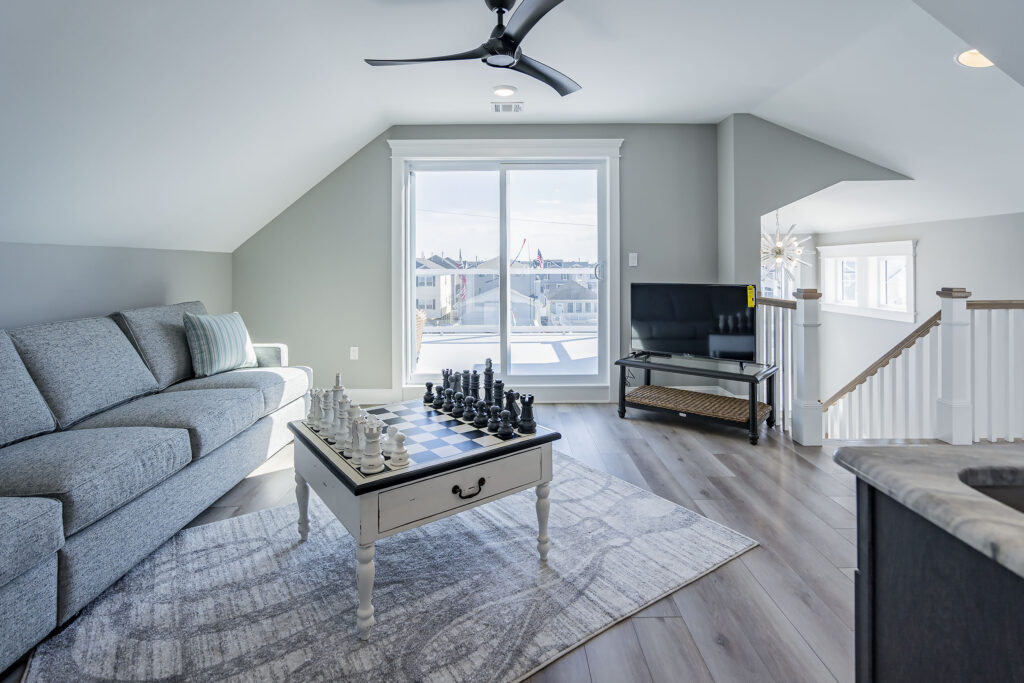
- Pendant lights: Suspended from the ceiling like a chandelier, pendant lights direct light downward, like a jewelry pendant on a necklace. Popular lighting choices for a kitchen island or dining table, pendants can add style and personality to a room. They come in all styles, sizes, and lengths, and can be installed as a single light or a grouping. Depending on the style of fixture, pendant lights can provide ambient lighting or more targeted task lighting.
- Recessed lighting: Sometimes called can lights, recessed lights are installed in an opening in the ceiling. These lights emit narrow bands of light perfect for accent or task lighting. When installed in a group, can lights also provide general lighting.
- Track lighting: Aptly named, track lights are several lights suspended from the ceiling in a track. Each light head can be redirected and its place in the track can be adjusted. A versatile option, track lighting can be used as accent, task, or general lighting, depending on the size of the lights and strength of the bulbs.
- Under-cabinet lighting: A popular choice for task lighting in a kitchen or home office, these fixtures are mounted under a cabinet, either as a strip of lighting or a single round fixture.
- Wall-mounted lighting: Wall-mounted lights, like sconces, can radiate light downward or upward, depending on the design of the fixture. These fixtures can be found in a variety of styles to compliment your décor. They deliver localized lighting, which can add drama to a room.
We’ll work with you one-on-one to discuss the specific lighting needs of your home and offer guidance on selecting the right mix of ambient, task, and accent lighting. We’ve built you the home of your dreams; we want to help you show it off with the right interior lighting plan.
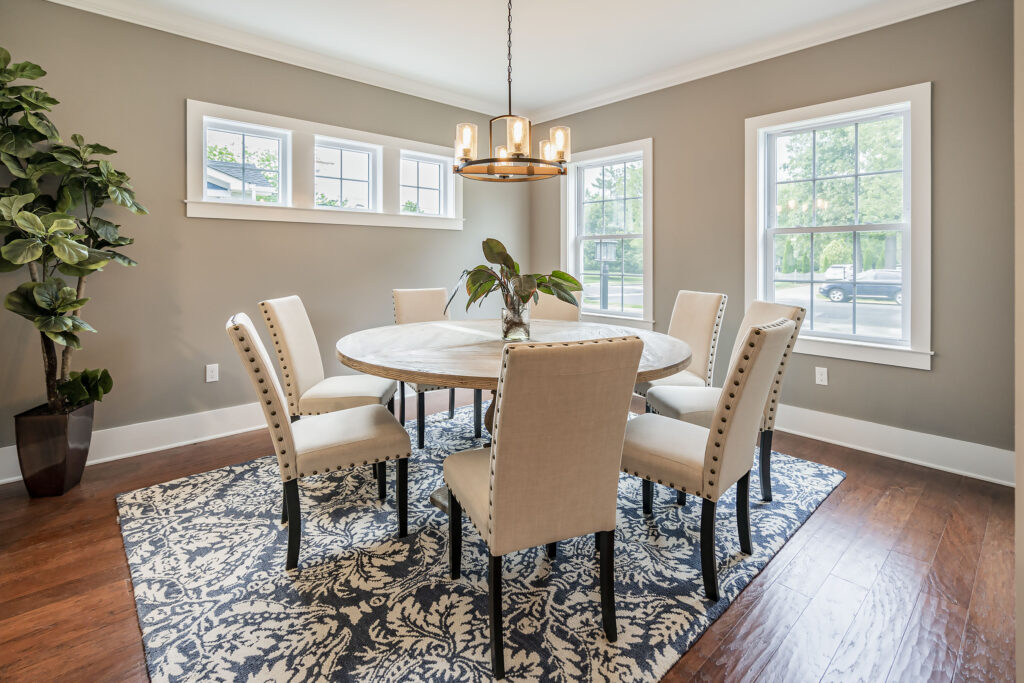
Resources:
https://issuu.com/palecekdesign/docs/lighting_brochure_2020-issuu
https://vimeo.com/493537331
Sources:
https://www.homestratosphere.com/types-of-lighting/
https://www.delmarfans.com/educate/basics/lighting-types/
https://www.hgtv.com/design/remodel/mechanical-systems/lighting-tips-for-every-room
https://www.hgtv.com/design/remodel/mechanical-systems/types-of-lighting-fixtures
